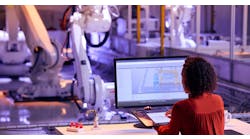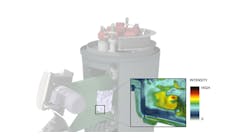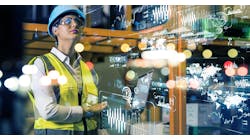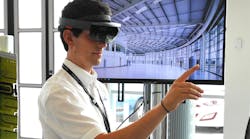Metalcasters never stop trying to improve their production processes, or to optimize their operations. Often, the ideas they study or propose start out as so-called “blank sheet” exercises, the sorts of collaborative projects that establish ideal scenarios for development in which cost or space or other limitations do not limit their ambitions. There are even examples of entirely idealized metalcasting operations being developed in the “virtual space,” either as a guideline to greenfield developments or to inspire the modular elements of current or future metalcasting projects.
The best example of real-life operations converging with the blank-sheet approach may be playing out now in England at the University of Sheffield Advanced Manufacturing Research Centre with Boeing, which includes AMRC Castings.
AMRC is a research complex that focuses on developing metals, materials, and parts, especially for aerospace, automotive, defense, energy, and construction programs. In recent months AMRC Castings — which emerged in 2013 as AMRC purchased Castings Technology International — has been ramping up a series of leading-edge operations. Last summer it opened an investment-casting operation for steel, and followed that with a large-dimension, five-axis cutting machine for polystyrene mold parts.
AMRC Castings’ latest addition is a titanium melting and casting operation capable of producing 1,100-lb. castings for aerospace structures. Its centerpiece is a Retech consumable-electrode casting furnace, with closed-loop cooling that prevents overheating, and hydraulic and pneumatic systems to evacuate air from the melting and casting chambers. The furnace rotates to pour molten titanium into ceramic molds positioned on a turntable, for centrifugal casting at up to 300 revolutions per minute.
The new operation also will produce ceramic mold shells up to two meters in diameter and 2.5 meters long, for finished castings weighing over 2.5 metric tons and suitable for the largest variants of aero engine intercases, and other aerospace structures.
While the Advanced Manufacturing Research Centre is focused on producing parts for current and emerging manufacturing programs, it manages to stage the best theoretical and conceptual ideas for real-world application. It’s one of the first organizations in the U.K. to implement Microsoft’s new HoloLens technology.
AMRC’s Integrated Manufacturing Group (IMG) works with industrial and academic partners on projects involving robotics, metrology, and “augmented reality,” to optimize production sequences and assembly programs. With the HoloLens headset, it is exploring “mixed reality” (MR) in manufacturing.
In augmented reality (AR), the research has a live direct or indirect view of the real world that is enhanced (“augmented”) with computer-generated content, such as sound, video, graphics, or location-based data. Examples of AR work at IMG include delivering instructions in the workplace using tablets and wearable technology, and cutting significantly the time needed to produce modular building panels by using projection to show exactly where components need to be fixed, rather than the assembly worker determining that location via calculation.
Virtual Reality (VR) uses software-generated images, sounds, and other sensations to replicate a real or imaginary environment with which the user can interact. At IMG, VR projects using HTC Vive and Oculus Rift headsets create simulations that allow a wearer to practice assembling products using virtual components before beginning the actual task. According to AMRC, such systems mimic real-world physics so that users with no technical know-how can use, and learn from, the system.
Now comes Mixed Reality, which allows users to see and move “holograms,” 3D projections, in the real world. Delegates at a recent AMRC conference on future manufacturing technologies saw a demonstration in which a full-sized holographic image of a robot was moved into different positions around a shop floor, and operated in its own virtual space.
“HoloLens technology allows you to work out where the robot needs to be to serve a number of machines that are already on the factory floor,” according to Chris Freeman, an AMRC fellow who leads IMG’s work on digitally assisted assembly.
Another demonstration using the HoloLens and a Skype link showed how an expert could provide help directly to an engineer in the field. HoloSkype displays to the expert exactly what the inquiring engineer can see, and allows the expert to show the engineer what to do by drawing arrows or transmitting text that can be seen by the engineer via the HoloLens headset.
“We are assessing the HoloLens for its suitability to create proof-of-concept applications for automated assembly tasks and in-line support assistance,” Freeman explained, adding that the real-world goal is to establish for digitally assisted techniques for planning and troubleshooting manufacturing operations.









